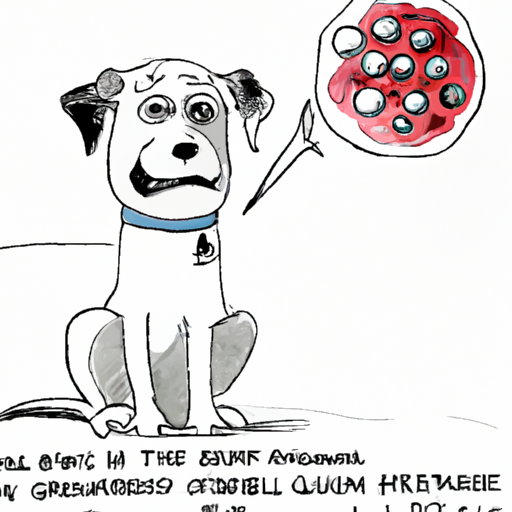Understanding Anemia
Anemia, dear caregiver, is not a disease in itself but rather a symptom of an underlying condition. It indicates a reduction in the number of red blood cells (RBCs) or the amount of hemoglobin in your dog’s blood. Hemoglobin, the protein that gives blood its red color, carries oxygen from the lungs to the rest of the body. Therefore, when a dog has anemia, its blood does not carry enough oxygen. This could lead to lethargy, weakness, and serious health issues if not addressed promptly.
Causes of Anemia in Dogs
Anemia in dogs can be caused by a variety of factors. Here are the most common ones:
- Blood loss: This could be due to injury, parasites, tumors, or diseases that cause ulcers or bleeding.
- Hemolysis: When the body destroys its own red blood cells faster than it can produce them, it leads to hemolysis.
- Bone marrow disease: Diseases that affect the bone marrow’s ability to produce red blood cells can cause anemia.
Symptoms of Anemia in Dogs
In recognizing the signs of anemia, you play a critical role. You’ll want to observe your pup for the following symptoms:
- Pale gums
- Lethargy or tiredness
- Rapid breathing or panting
- Loss of appetite
- Dark, tarry stools
These symptoms could be subtle at first, but they usually become more pronounced as the condition progresses.
Diagnosing and Treating Anemia
A trusted veterinarian is your best partner in diagnosing and treating anemia in your dog. They will conduct a complete blood count (CBC) to determine the number of red and white blood cells. Here’s an example of what a CBC test might look like:
| Test | Normal Range |
|---|---|
| Hemoglobin (HGB) | 12-18 g/dL |
| Hematocrit (HCT) | 37-55% |
| Red Blood Cells (RBC) | 5.5-8.5 x 10^6/µL |
| White Blood Cells (WBC) | 6-17 x 10^3/µL |
The treatment will depend on the underlying cause of the anemia. If it’s due to blood loss, the vet might need to stop the bleeding or even perform a blood transfusion. For diseases of the bone marrow, other treatments such as chemotherapy may be necessary.
Preventing Anemia in Dogs
Prevention is always better than cure. Some ways to prevent anemia in dogs include:
- Regular veterinary check-ups
- Keeping your dog’s vaccinations up-to-date
- Ensuring your dog has a balanced diet
- Regularly checking for parasites
FAQ
Q: Can anemia in dogs be cured?
A: Yes, often anemia can be cured or managed with the right treatment plan, which depends on the underlying cause.
Q: What do pale gums indicate?
A: Pale gums can indicate anemia in dogs, as it may be a sign of reduced blood flow or low oxygen delivery.
Q: Is anemia in dogs life-threatening?
A: If left untreated, anemia can indeed be life-threatening. However, with prompt diagnosis and treatment, many dogs with anemia lead healthy, normal lives.
Q: Can I prevent my dog from getting anemia?
A: While you can’t prevent all causes of anemia, regular vet visits, a balanced diet, and preventive care can reduce your dog’s risk.



